
Blue-winged Olives
Baetis
Tiny Baetis mayflies are perhaps the most commonly encountered and imitated by anglers on all American trout streams due to their great abundance, widespread distribution, and trout-friendly emergence habits.
Featured on the forum

It's only barely visible in one of my pictures, but I confirmed under the microscope that this one has a prosternal horn and the antennae are mid-way between the eyes and front of the head capsule.
I'm calling this one Pycnopsyche, but it's a bit perplexing. It seems to key definitively to at least Couplet 8 of the Key to Genera of Limnephilidae Larvae. That narrows it down to three genera, and the case seems wrong for the other two. The case looks right for Pycnopsyche, and it fits one of the key characteristics: "Abdominal sternum II without chloride epithelium and abdominal segment IX with only single seta on each side of dorsal sclerite." However, the characteristic "metanotal sa1 sclerites not fused, although often contiguous" does not seem to fit well. Those sclerites sure look fused to me, although I can make out a thin groove in the touching halves in the anterior half under the microscope. Perhaps this is a regional variation.
The only species of Pycnopsyche documented in Washington state is Pycnopsyche guttifera, and the colors and markings around the head of this specimen seem to match very well a specimen of that species from Massachusetts on Bugguide. So I am placing it in that species for now.
Whatever species this is, I photographed another specimen of seemingly the same species from the same spot a couple months later.
I'm calling this one Pycnopsyche, but it's a bit perplexing. It seems to key definitively to at least Couplet 8 of the Key to Genera of Limnephilidae Larvae. That narrows it down to three genera, and the case seems wrong for the other two. The case looks right for Pycnopsyche, and it fits one of the key characteristics: "Abdominal sternum II without chloride epithelium and abdominal segment IX with only single seta on each side of dorsal sclerite." However, the characteristic "metanotal sa1 sclerites not fused, although often contiguous" does not seem to fit well. Those sclerites sure look fused to me, although I can make out a thin groove in the touching halves in the anterior half under the microscope. Perhaps this is a regional variation.
The only species of Pycnopsyche documented in Washington state is Pycnopsyche guttifera, and the colors and markings around the head of this specimen seem to match very well a specimen of that species from Massachusetts on Bugguide. So I am placing it in that species for now.
Whatever species this is, I photographed another specimen of seemingly the same species from the same spot a couple months later.

Troutnut is a project started in 2003 by salmonid ecologist Jason "Troutnut" Neuswanger to help anglers and
fly tyers unabashedly embrace the entomological side of the sport. Learn more about Troutnut or
support the project for an enhanced experience here.
Chironomidae (Midge) True Fly Adult Pictures
One of the only real benefits I've got from my rearing aquarium so far is that I've had quite a variety of midges emerge, giving me a chance to photograph these fragile little insects which are otherwise really hard to transport in photogenic form. This one recovered from being gassed and flew away before I could photograph it on the ruler, but it was very small, around 1.5mm.
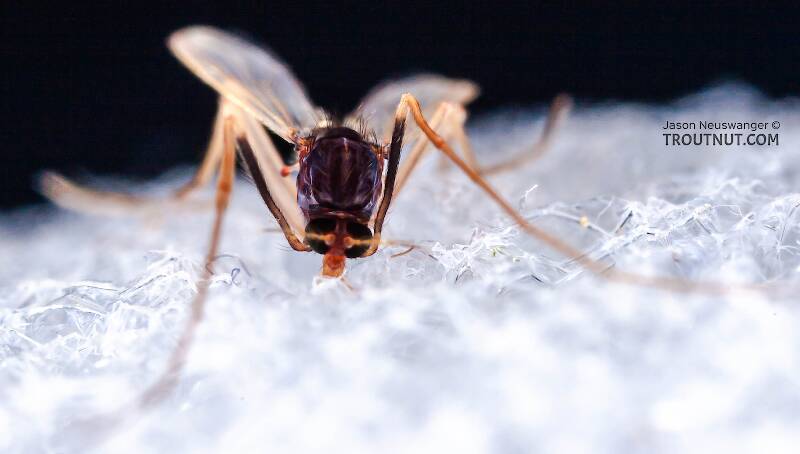
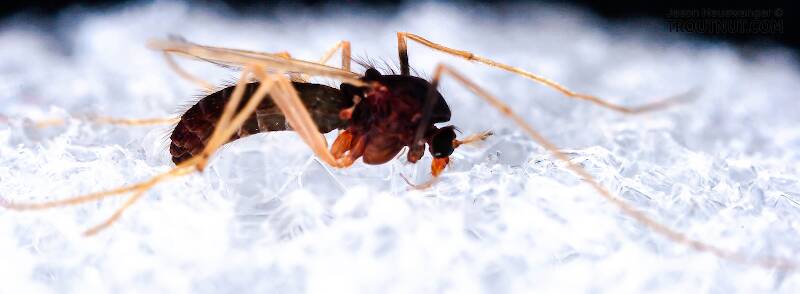
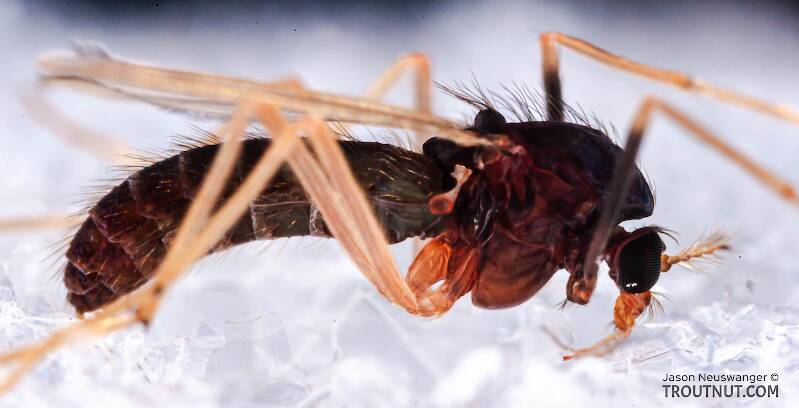
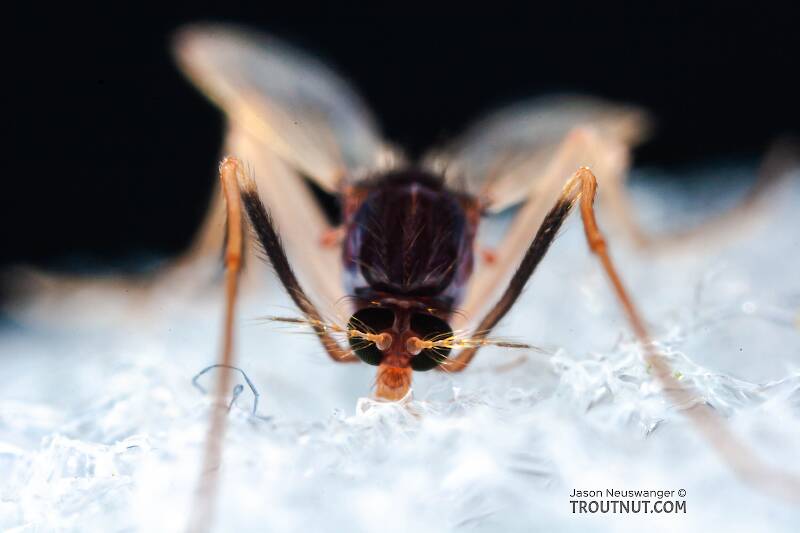
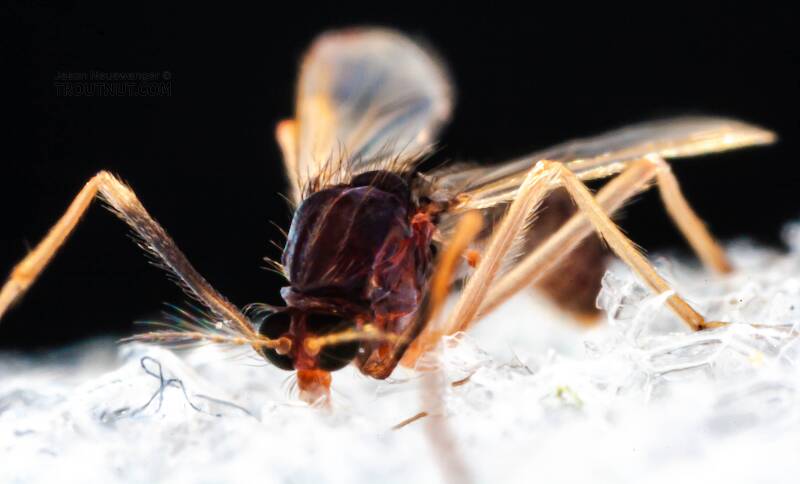
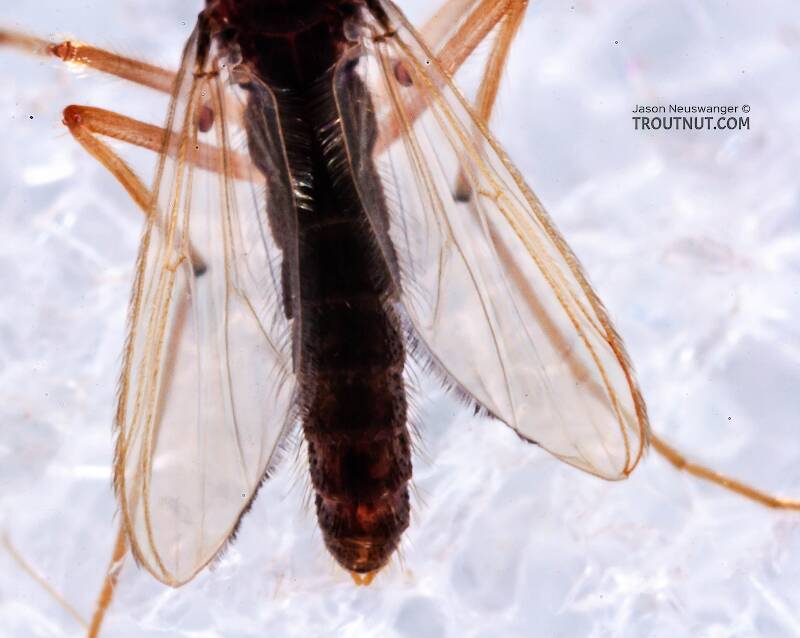
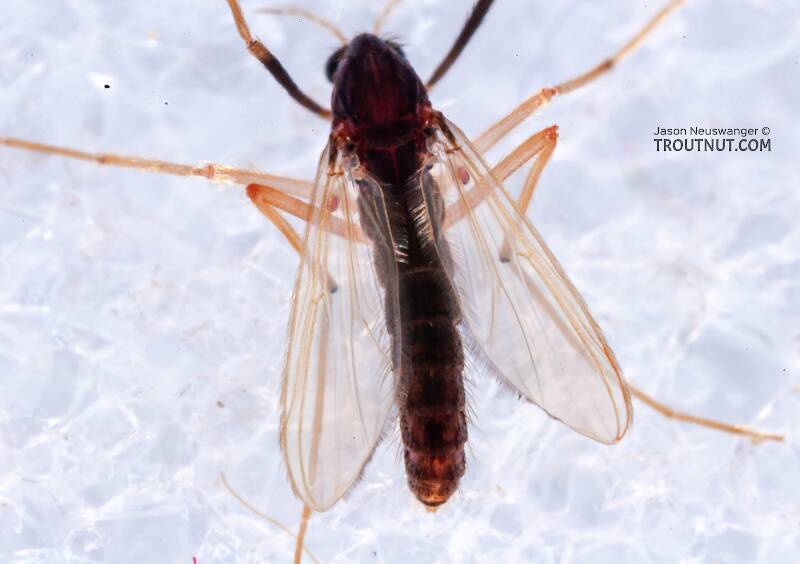
This true fly was collected from Mystery Creek #62 in New York on April 23rd, 2007 and added to Troutnut.com by Troutnut on April 25th, 2007.
Discussions of this Adult
Cultivating Chronomidae
3 replies
Posted by Gatruk on Jan 29, 2010
Last reply on Jan 30, 2010 by Taxon
I am searching to find effective ways of cultivating chronomidaes, what kind of best cheap an effective medium that I should use , what are there lifecycles . lifespans an their behaviors. Thanks for letting me to join the forum.
Start a Discussion of Adult
Chironomidae (Midge) True Fly Adult Pictures
Collection details
Location: Mystery Creek #62, New York
Date: April 23rd, 2007
Added to site: April 25th, 2007
Author: Troutnut
Date: April 23rd, 2007
Added to site: April 25th, 2007
Author: Troutnut

